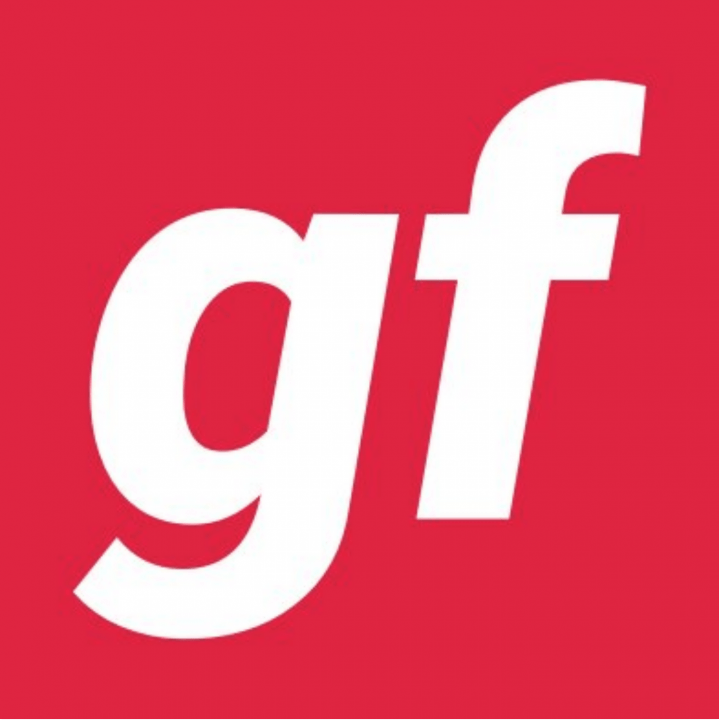This article originally appeared on GovFresh, by Luke Fretwell.
SpeakEasy Political wants to make it easier for everyone to run for elected office. Danielle Winterhalter, SpeakEasy co-founder and director of strategic partnerships, shares how they’re addressing a fundamental aspect of lowering the barrier to entry, especially when it comes to political mail, which is still more relevant than you might think.
What’s the SpeakEasy Political elevator pitch?
Believe it or not, I’ve actually delivered this in a couple elevators – – it goes a little like this:
Speakeasy is a new tool that leverages technology to cut costs in the creation and distribution of political mail.
Our founding team is group of political consultants who were tired of seeing good candidates and causes priced out of modern elections. So, we built a platform that affords campaigns and organizations the opportunity to use professionally designed, pre-built direct mail templates – paired with their own content and data powered by the VAN & PDI – to produce targeted, persuasive messaging. On time and under budget.
SpeakEasy makes consultant-caliber communication tools affordable for small campaigns. By lowering the cost barriers to participation, we provide the working mom running for school board, or the small business owner interested in serving on county commission, top of the ticket resources at a price point that won’t dissuade good people from running for office.
We believe that by cutting the costs of proven voter communication tools, we can amplify the voices of candidates and causes with tights budgets and limited resources.
What’s the back story on why you started?
Our founding team came out of Storefront Political Media, a full service political consulting firm that works with democratic candidates and progressive organizations throughout California, and across the country. We loved the clients we were working with, but we were also in the position of having to turn away a lot of first-time, local candidates who didn’t have the budgets to afford the services of a consulting firm.
As the cost of running campaigns continuously increases each cycle – and as major conservative donors, like the Koch brothers, funnel their dollars into down ballot races – we realized that too many folks weren’t able to get their message to voters, and Democratic candidates and progressive causes were actively being priced out of running competitive campaigns. (Now – there will always be races that need the full court press services of firms like Storefront, but we wanted to create a tool that would help elevate local candidates and budget-conscious organizations.)
Being in San Francisco, and surrounded by the influence of Silicon Valley, Bergen Kenny – our CEO – knew there had to be a way technology could help solve this problem. After her son was born, she was making her baby announcements on a template based invitation platform called Minted.com and thought – “why the heck don’t we do this for political mail”?
Eric Jaye, the founder and CEO of Storefront Political, helped develop the concept and thousands of hours, and one political cycle later, we’ve had the privilege of doing work from California to North Carolina and have an established proof of concept as we look ahead to 2017.
Why is political snail mail still relevant?
Eric Jaye actually wrote a great piece in Campaigns & Elections magazine addressing this exact question. As he points out, it really comes down to a couple main proof points:
The limited reach of digital drives use of political mail
As more campaigns adopt the precision of cookie-matched digital advertising, it’s becoming clear that direct mail is a needed companion to these programs.
Given the limited time frame of most political campaigns, even a strong digital buy only reaches about 70-80 percent of the total available audience. That means, even a well-run, adequately funded digital program might only reach a little more than half the total voter audience.
This is where political mail can help address that oversight in reach – with mail, you can send directly to the homes of the voters you choose, and according to USPSstudies, nearly 70 percent of recipients at least scan-read their mail.
Sure, a piece of political mail is more expensive on a per view basis, but nothing is more costly than leaving up to half of your targeted voter universe out of your communications program.
The barrier to entry is low
Cutting a TV ad is expensive, placing a pre-roll buy is complicated, and even the best social media campaigns are managed by professionals – but as do-it-yourself political mail services come online, it’s becoming cheaper and easier for candidates who don’t have large campaign coffers to reach voters at home.
Our clients can create their professional quality mail piece after their kids go to bed, and instead of having to make a trip to the county clerk or a call to a data vendor – they can choose their voter targets with a few clicks. We think that bringing design and voter targeting together has the power to transform the market, allowing candidates and causes to forgo consultants and run their own programs.
Especially in local races, direct political mail remains a salient form of voter communications – we just want to make it more attainable for Democratic candidates and organizations.
Any inspiring examples?
We’re actually incredibly fortunate to be inspired by so many of our clients and organizational partners – we get to work with such talented folks, who are selflessly dedicated to their communities.
One great example of a pretty inspiring candidate is Amber Childress – who is here in the Bay Area. Amber has a busy professional career, but as her young son started in the Alameda School District, she wanted to apply her professional skills to the local school board as a way of being more involved in his education.
Being a working mom, Amber didn’t have dozens of hours a week to spend on the phone dialing for dollars raising the money it takes to hire a consultant to run your mail program. But, after work one day, Amber logged on to SpeakEasy, created her political mail piece, picked her targets, and in just a few hours – we were running it through the production process.
By telling her story to voters, Amber was able to unseat a two term incumbent and won her race by just over 800 votes. I think Amber’s story is so iconic of what we’re trying to do at SpeakEasy – build a tool that allows good folks to tell their story, save their budget, and get more involved with their communities.
What’s your advice to those who want to run for elected office?
Please do it.
Please.
Running for office is intimidating, and scary, and cumbersome – but there are so many fantastic organizations and tools out there to support first time candidates. Groups like Emerge train women to run and win local office, The New American Leaders Project focuses on supporting candidates of color in their campaigns, and local labor organizations and county parties all have candidate training infrastructures to support you in your run. Or call us – we talk to folks all the time who are looking to start their campaigns. Sometimes, a thoughtful conversation about first steps is all you need to get over the intimidation hurdle – and we are more than happy to offer a little advice.
Personally, I think that one of the biggest takeaways of the 2016 election is that we must get more folks involved in the political process, at every level. In order to prevent another presidential election stacked with candidates with terribly low approval ratings – we have to start getting more people engaged in their school boards, county commissions, water boards and city councils. We need to intentionally build the bench in order to instigate greater electoral participation.
So, don’t wait for your neighbor to do it – get involved. Run. We’ll help.
How can others learn more about SpeakEasy Political?
I’m so glad you asked! To learn more, you can visit our website atwww.SpeakEasyPolitical.com, connect with us on the Facebook, follow us on Twitter, or shoot me an email at [email protected]. We also have a quick little explainer video here, if you’re curious to the mechanics of the platform.




